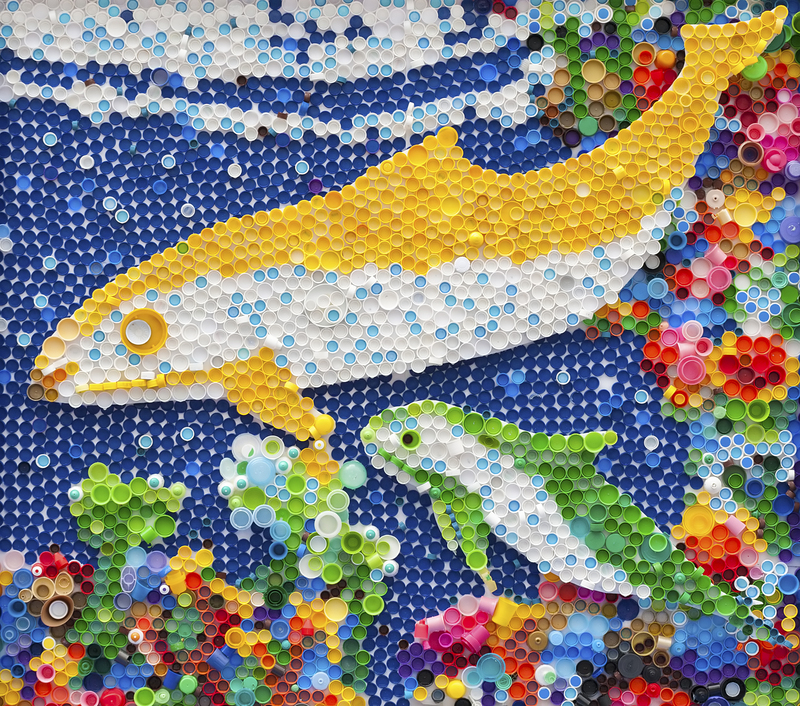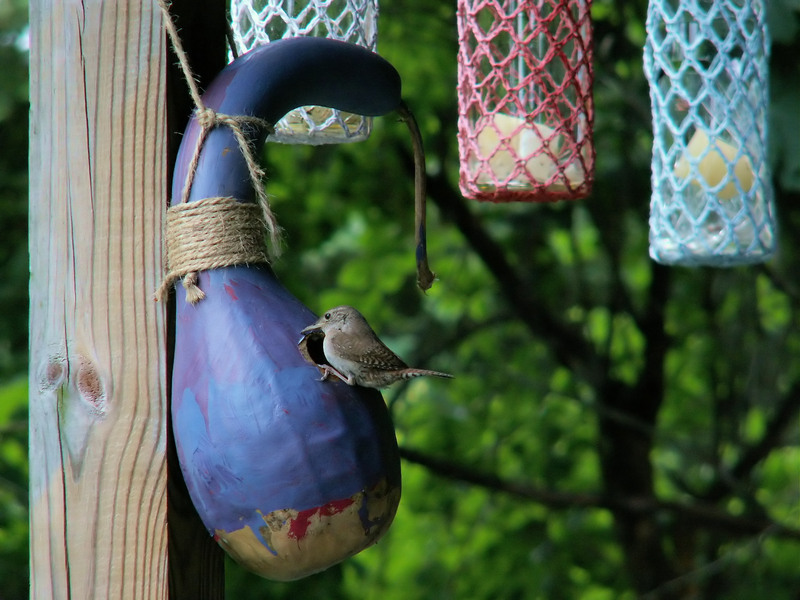Upcycling Magic: Make Masterpieces from What Others Throw Away
Have you ever looked at an empty glass jar, a discarded wooden pallet, or that chipped old chair sitting by the curb and wondered if it had another life left in it? Upcycling transforms what others throw away into treasures, breathing new purpose into objects headed for the landfill. This eco-friendly art form is more than a trend--it's a sustainable movement that sparks creativity and celebrates resourcefulness. Dive into the magical world of upcycling and discover how to create masterpieces from what others no longer want.

What is Upcycling?
At its core, upcycling involves taking discarded materials or products and creatively transforming them into something of greater value or functionality. Unlike recycling, which often breaks down materials for re-manufacturing, upcycling preserves the original form and repurposes it in innovative ways. This process not only reduces waste but also gives a second life to items that would otherwise clutter landfills.
Key Differences Between Upcycling and Recycling
- Upcycling: Adds value by creatively reimagining and repurposing waste materials.
- Recycling: Breaks materials down into raw components for the production of new products.
- Sustainability: Upcycling is generally more energy-efficient since it involves less processing than recycling.
- End Product: Upcycled items are often unique, artistic, or even functional, whereas recycled materials become new, often similar, products.
Why Upcycle? The Benefits of Creating with Cast-Offs
There's a transformative magic in upcycling--the ability to see potential where others see waste. But the practice goes beyond artistry. Here are some compelling benefits of upcycling:
- Environmental Impact: Diverts waste from landfills and reduces the demand for new resources.
- Creativity Boost: Sparks artistic inspiration and problem-solving skills.
- Personal Expression: Every upcycled piece is unique, reflecting its creator's vision and ingenuity.
- Cost-Effective: Making masterpieces from what others throw away saves money and encourages frugality.
- Community Engagement: Upcycling often involves sharing knowledge, hosting workshops, or collaborating with others.
- Trend-Setting: Unique upcycled creations add character and individuality to your personal space or wardrobe.
The Art and Craft of Upcycling: Inspiration for Every Home
The world of creative upcycling is vast and limited only by your imagination. Whether you want to add flair to your home, reduce your environmental impact, or simply enjoy a weekend DIY project, there are countless ways to turn trash into treasure. Here are some inspirational upcycling ideas for every space and skill level:
1. Furniture Facelifts: From Curbside Finds to Conversation Pieces
Imagine transforming a battered dresser into a chic bathroom vanity or turning pallets into an outdoor sofa. With a bit of sanding, painting, or reupholstering, discarded furniture can become the centerpiece of any room.
- Pallet Revolution: Use shipping pallets to build coffee tables, bed frames, or garden planters.
- Old Doors, New Purpose: Repurpose vintage doors into dining tables, headboards, or shelving units.
- Drawer Resurrection: Standalone drawers can make stylish wall shelves or under-bed organizers.
2. Glass Jar Magic: Eco-Chic Storage and Decor
Before tossing those jelly jars or sauce bottles, consider their upcycling potential. Clean glass jars can be upcycled into beautiful household items:
- Organizer Jars: Perfect for pantry staples, spices, or craft supplies.
- Vases & Candle Holders: Add paint, twine, or etching for customized home decor.
- Hanging Lanterns: Create glowing outdoor ambiance by filling jars with fairy lights.
3. T-Shirts to Treasure: Upcycled Clothing Masterpieces
Old clothes don't have to become rags. With some creativity, they can be upcycled into fashionable, functional items:
- T-shirt Tote Bags: No-sew methods make this project quick and eco-friendly.
- Denim Patchwork: Combine old jeans into trendy tote bags, quilts, or even wall art.
- Fabric Jewelry: Use scraps to craft unique earrings, necklaces, or bracelets.
4. Upcycled Art: Giving Discarded Materials a Voice
Many artists use found objects to create stunning works of art. The juxtaposition of materials with history and character makes upcycled art especially meaningful.
- Sculptures from Metal Scraps: Welded or assembled metal becomes striking modern art.
- Mosaic Masterpieces: Use broken ceramics or glass to create colorful wall hangings.
- Assemblage Art: Combine diverse objects like clock parts or driftwood for compelling pieces.
Step-by-Step Guide: How to Start Your Upcycling Journey
Want to join the growing community of upcycling enthusiasts? Here's a straightforward path to transforming everyday discards into upcycled masterpieces:
1. Collect with Intention
Start saving items with potential. Look for glass jars, tin cans, wooden crates, pallets, textiles, and broken furniture. Ask friends or visit thrift stores and flea markets for hidden gems.
2. Gather Basic Tools and Supplies
- Good-quality sandpaper
- Paints, brushes, and finishings
- Basic hand tools (hammer, screwdriver, pliers)
- Glue gun and adhesives
- Measuring tape and safety gear
3. Do Your Research
Browse upcycling ideas on sites like Pinterest, YouTube, or DIY blogs. There's an abundance of tutorials guiding you through techniques for wood, fabric, metal, glass, and more.
4. Plan Your Project
Visualize what you want to create and make a sketch or list the steps. Identify potential challenges and how to overcome them.
5. Start Creating!
Jump in and let the process unfold. Remember, upcycling is as much about discovery as it is about following plans. If things go awry, adapt--mistakes often lead to new ideas.
Popular Upcycling Techniques to Try
Ready to bring some upcycling magic into your craft arsenal? Explore these tried-and-true methods:
- Decoupage: Add character to boxes, vases, or trays using decorative paper and glue.
- Distressing & Antiquing: Create vintage looks with paint and sanding for furniture and decor.
- Stenciling: Personalize surfaces with stencils and paints--perfect for upcycled signs or furniture.
- Mosaic: Arrange broken tiles or glass into eye-catching patterns on tabletops or planters.
- Sewing & Patching: Repair and reinvent clothing with visible patches and embroidery.
- Welding & Metalwork: Join found metal objects into functional or decorative sculptures.
Upcycling Magic in Everyday Life
The best part about upcycling is that it doesn't require special skills or a big budget--just curiosity and a willingness to experiment. Here are ways you can incorporate upcycling into your daily routine:
- Kitchen Organization: Use old mugs, jars, or tins for utensils and herb gardens.
- Home Office Upgrades: Repurpose boxes and cans into desk organizers and pen holders.
- Garden Innovations: Convert boots, teapots, or drawers into creative planters.
- Children's Play: Craft costumes, toys, and learning games from cardboard and fabric scraps.
- Gift Giving: Make personalized presents by upcycling materials into one-of-a-kind treasures.
Success Stories: How Upcycling Changed Lives
- Furniture Start-Ups: Many successful companies began by transforming old wood or metal into signature furniture pieces.
- Eco Artists: Artists around the world showcase their upcycled creations in galleries, promoting community awareness and sustainability.
- Community Projects: Neighborhood cleanup and upcycling workshops foster creativity while addressing waste issues.
The Environmental Impact of Upcycling
The magic of upcycling extends far beyond personal satisfaction. Every item diverted from the landfill reduces the consumption of resources and energy needed for manufacturing new goods. Here's why upcycling is vital for a greener future:
- Reduces Carbon Footprint: Less energy is used in upcycling compared to traditional manufacturing or recycling processes.
- Encourages Conscious Consumption: Upcycling promotes mindful buying and discourages a throwaway culture.
- Supports Circular Economy: By extending the lifecycle of products, upcycling keeps resources in circulation for longer.
Tips for Making Your Upcycling Projects Stand Out
- Embrace Imperfections: Flaws add character; let the original story of the object shine through.
- Mix Materials: Combine wood, metal, fabric, or glass for more interesting results.
- Think Beyond Function: Consider how your upcycled creation can be both beautiful and useful.
- Document Your Process: Photographing before and after shots showcases your work and inspires others.
- Add Personal Touches: Monograms, custom paint colors, or family history make each piece unique.

Where to Find Upcycling Inspiration and Community
If you're looking for new ideas, resources, or fellow upcyclers, there's a growing global network awaiting you:
- Online Communities: Platforms such as Pinterest, Instagram, and Reddit's upcycling forums.
- Workshops and Classes: Local makerspaces often host upcycling events and classes.
- Flea Markets and Thrift Stores: Source your next project and connect with like-minded creators.
- Eco-Fairs and Exhibitions: Attend events dedicated to sustainability and handmade goods.
Conclusion: Unleash Your Upcycling Magic Today!
The world is filled with hidden possibilities, waiting to be unlocked by your imagination. Upcycling magic invites you to see beyond the surface, to reimagine value, and to create masterpieces from what others throw away. Whether you're a seasoned DIYer or just starting, the journey is rewarding and the impact far-reaching. So next time you see something destined for the trash, remember: with a touch of ingenuity, you can turn today's waste into tomorrow's wonder.
Dare to be different, save the planet, and craft your own story--one upcycled masterpiece at a time!
```